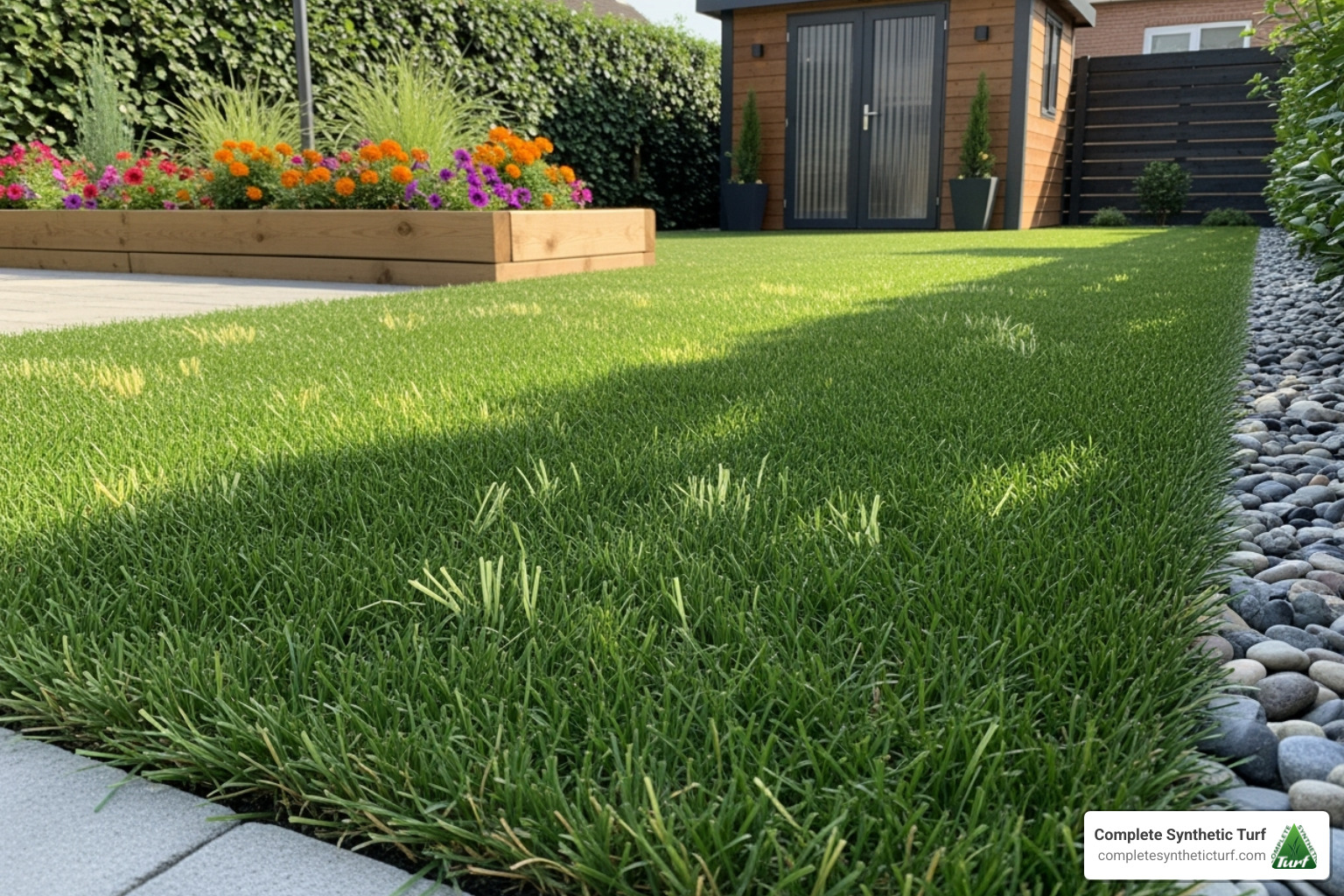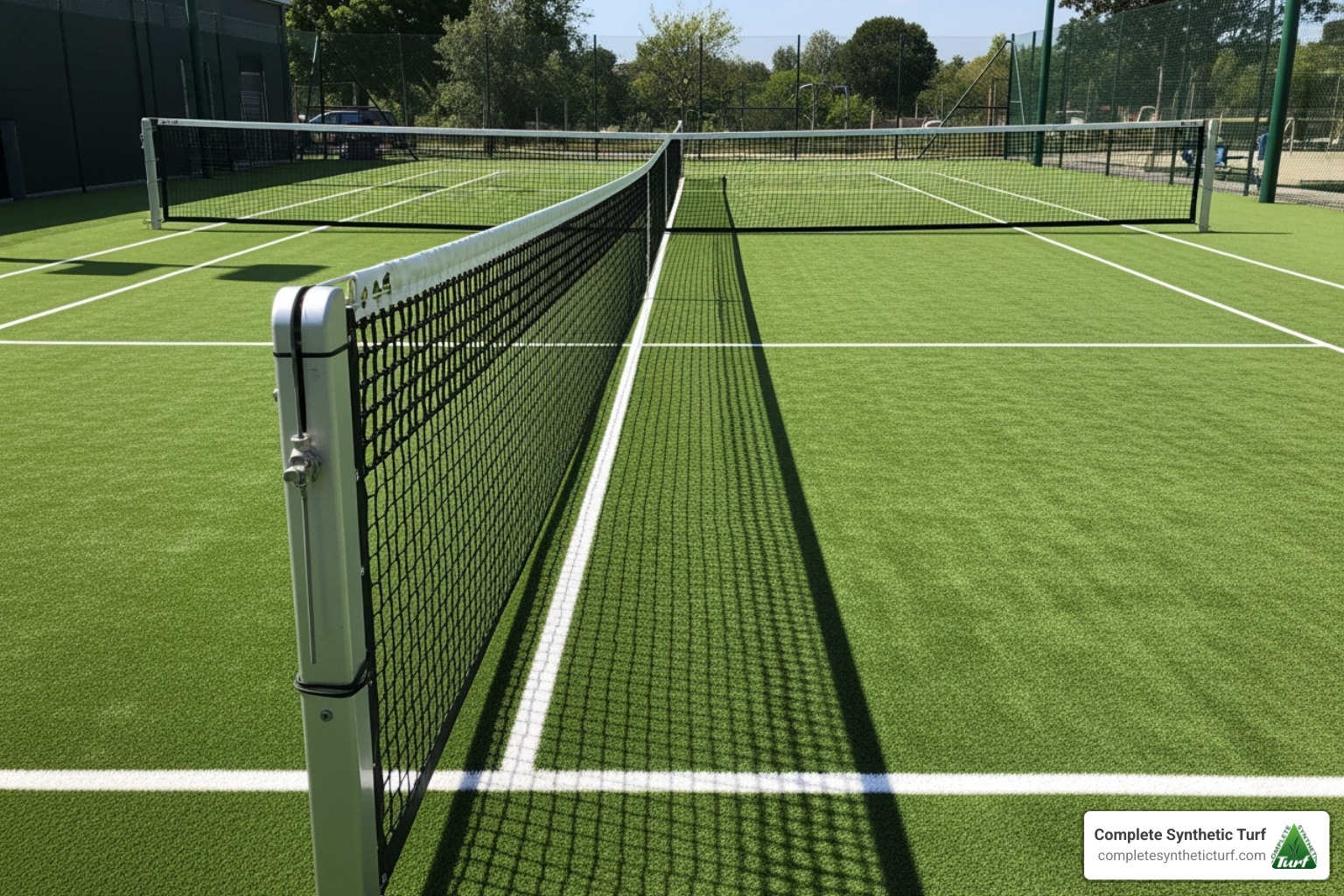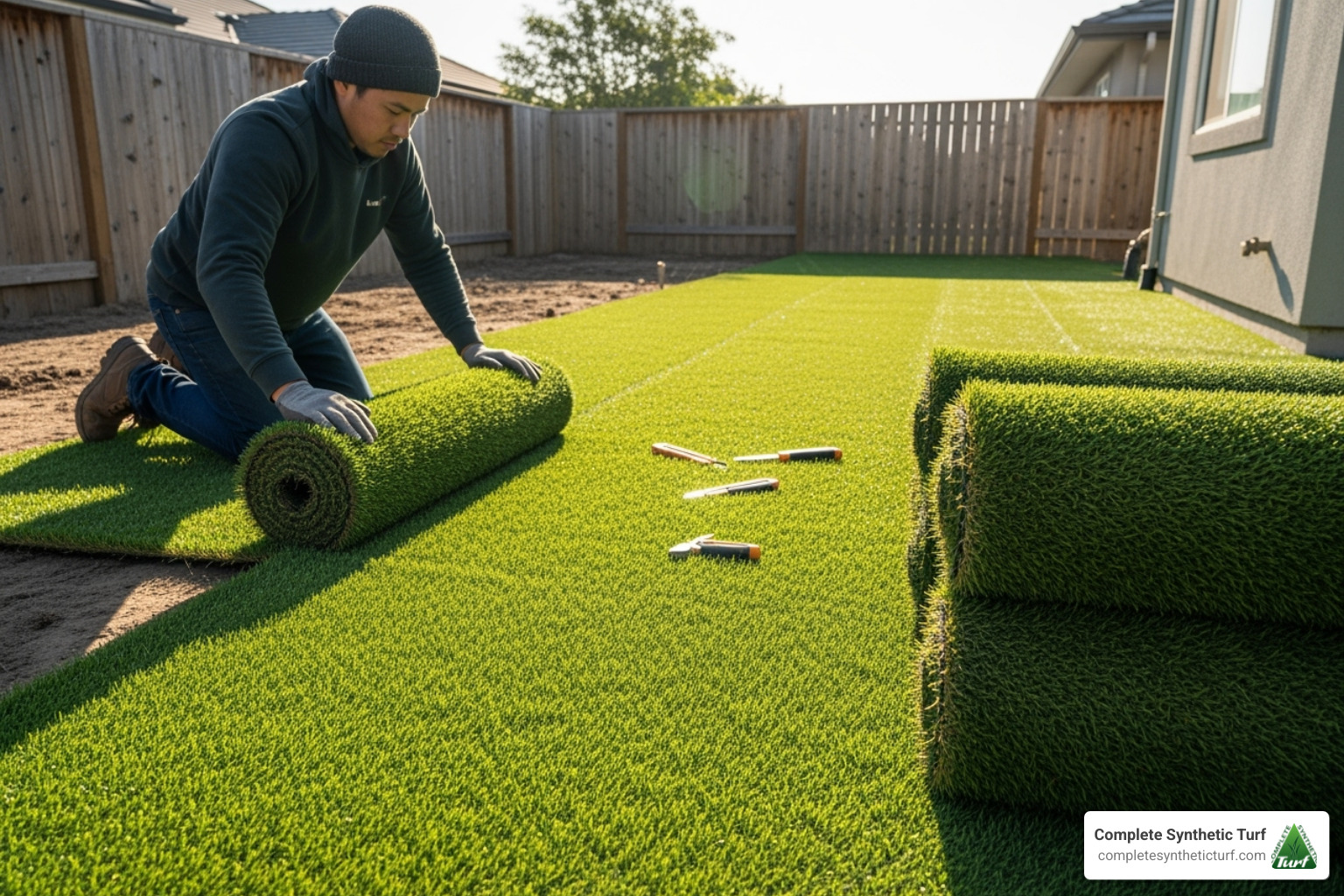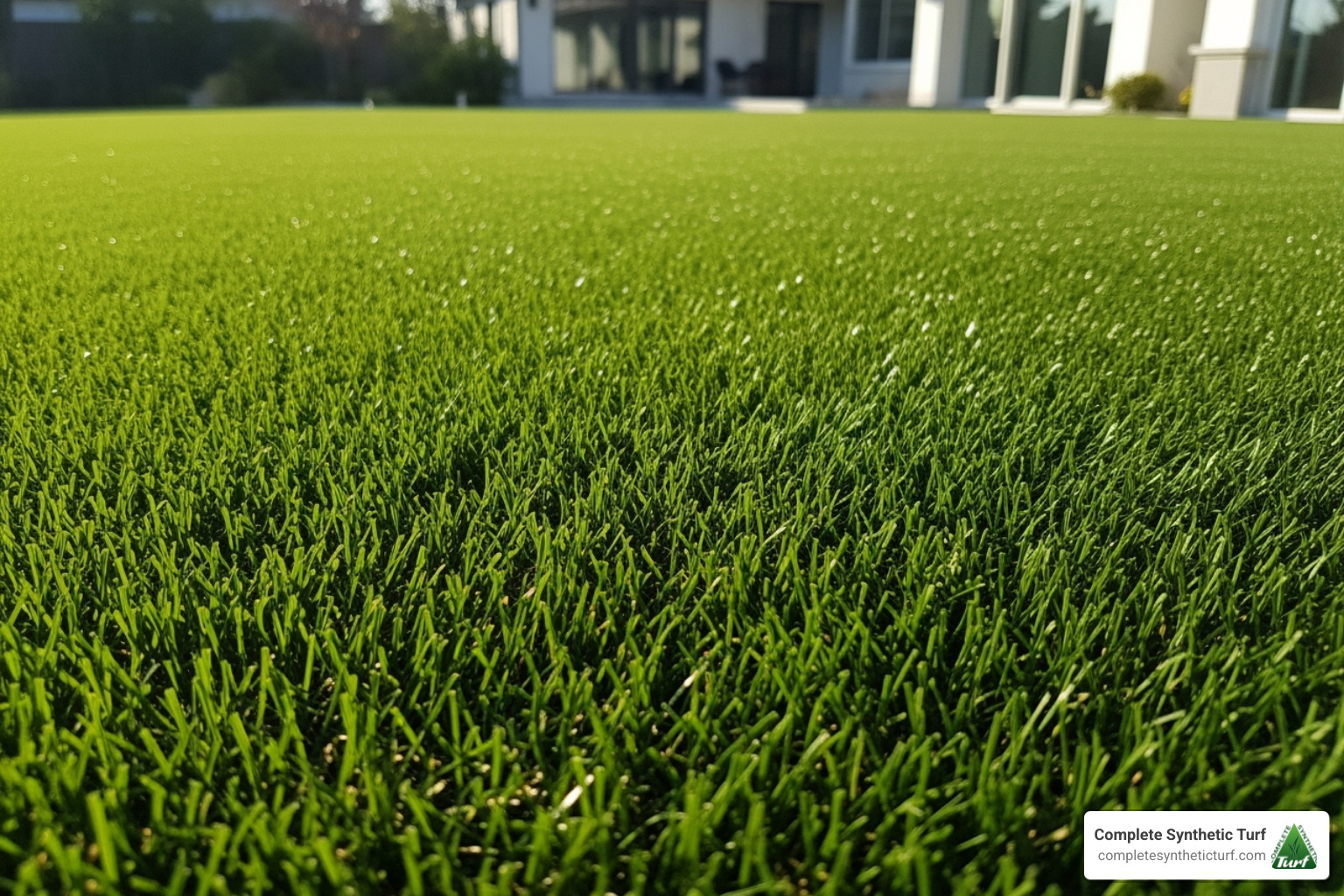Quality turf near me: Discover 2025’s Best
Why Finding Quality Turf Near You Can Transform Your Property
Quality turf near me searches are increasing as homeowners find the long-term benefits of synthetic grass. Whether you’re tired of high water bills, constant lawn maintenance, or dealing with muddy pet areas, artificial turf offers a permanent solution that looks great year-round.
Quick Answer for Local Turf Shoppers:
- Top Local Brands: Look for American-made options from premium suppliers
- Key Quality Factors: 1.5-2 inch pile height, 60+ oz face weight, urethane backing
- Average Costs: $8-15 per square foot installed (saves $500+ annually on water/maintenance)
- Installation Time: 1-3 days for most residential projects
- Warranty: Quality installers offer 10-15 year product warranties
- Best Applications: Pet areas, pool surrounds, putting greens, full lawns
The artificial turf industry has come a long way from the plastic-looking grass of decades past. Today’s synthetic turf is so realistic that pets won’t be able to tell the difference between artificial grass and real grass, a fact noted by many industry leaders.
Modern quality turf eliminates the frustrations that drive homeowners to search for alternatives. No more weekend mowing sessions, no more brown patches during dry spells, and no more muddy paws tracked through the house. Experienced companies have been perfecting these solutions for decades, with some installations lasting 20-25 years.
The numbers speak for themselves: synthetic turf can save 99,000 gallons of water annually for an average 1,800 square foot lawn, potentially reducing water bills by up to $500 per year. Over a 20-year period, artificial grass proves to be 15% more cost-effective than maintaining natural grass when you factor in watering, fertilizing, mowing, and replacement costs.
Finding the right local installer makes all the difference between a mediocre lawn and a stunning outdoor space that adds value to your property.
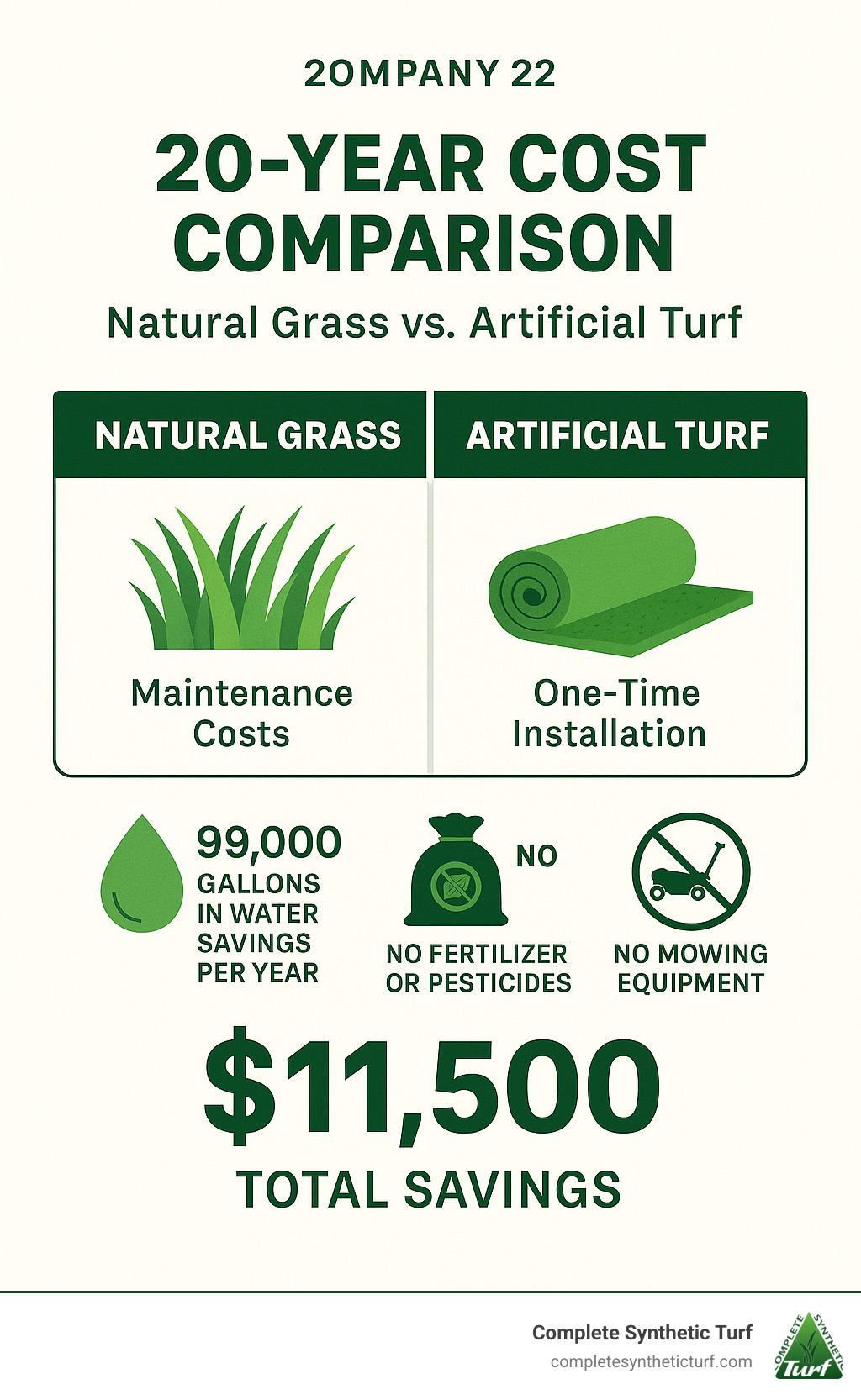
Quality turf near me helpful reading:
What Defines “Quality” in Artificial Turf?
When you’re searching for quality turf near me, you’re not just looking for something green to cover your yard. You’re investing in a sophisticated product that’s come a long way from the old-school plastic grass your grandparents might remember.
Today’s artificial turf is a marvel of engineering, designed to look stunning, feel comfortable underfoot, and last for decades. But what exactly makes one turf “quality” and another just okay?
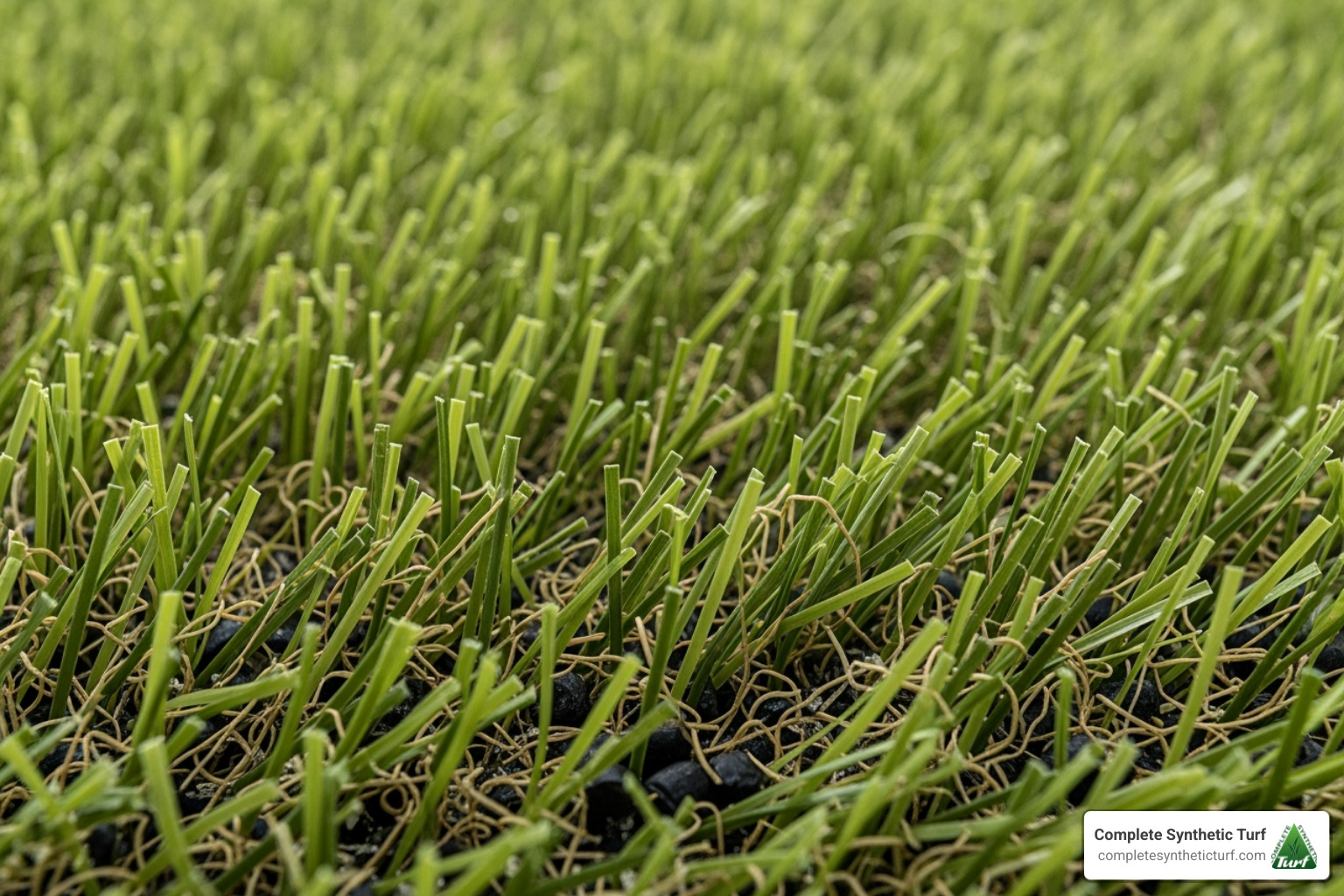
The difference lies in the details. Quality artificial turf needs to handle Florida’s intense sun, sudden downpours, and everything from kids’ birthday parties to your dog’s daily zoomies. It’s about creating a surface that performs beautifully year after year.
Key Material Components
Think of artificial turf like a sandwich – each layer has a specific job, and when they work together, you get something amazing.
The polyethylene fibers are the star of the show. These are the individual grass blades that create that lush, green look you’re after. High-quality polyethylene feels soft and natural, not scratchy or plastic-like. It’s engineered to bounce back after being stepped on and resist fading even under Florida’s relentless sunshine.
But those main blades need backup. That’s where polypropylene thatch comes in. This curly, often brownish layer sits at the base, mimicking the natural thatch you’d find in real grass. It adds density and makes the turf look fuller and more realistic. When you run your hands through quality turf, you’re feeling this clever combination working together.
The foundation of everything is the urethane backing. This might not be glamorous, but it’s crucial. A strong urethane backing keeps your turf stable through temperature changes and provides excellent drainage. In Florida, where afternoon thunderstorms are a way of life, you need turf that drains quickly so you’re not dealing with puddles or soggy spots.
Quality turf strikes the perfect balance between durability and softness. It needs to be tough enough to handle years of use but gentle enough that you’d happily walk on it barefoot or let your kids play on it all day.
Understanding Turf Specifications
Here’s where things get a bit technical, but don’t worry – we’ll keep it simple.
Face weight is basically how much the grass fibers weigh per square yard. Think of it like thread count in sheets – higher usually means better quality. For quality turf near me installations, we typically recommend options with 60 ounces or more of face weight. This gives you that plush, dense feel that looks and performs like premium natural grass.
Pile height is just how tall the grass blades are. For most residential lawns, 1.5 to 2 inches hits the sweet spot – it looks like freshly mowed grass and feels great underfoot. Shorter pile works better for putting greens where you need a consistent ball roll, while longer pile can feel more luxurious but might need extra support to keep standing tall.
The stitch rate tells you how tightly packed the grass fibers are. More stitches per inch means a denser, fuller-looking lawn that’s more durable over time. Similarly, the gauge measures how close together the rows of stitches are – closer rows create that uniform, carpet-like appearance that screams quality.
Finally, there’s infill – the material that goes between the grass blades after installation. Silica sand is popular because it helps with drainage and keeps blades upright. Crumb rubber adds bounce and cushioning. For pet owners, zeolite is fantastic because it naturally fights odors. Acrylic-coated sand helps keep surface temperatures cooler, which is especially nice here in Florida.
When you’re shopping for artificial turf, asking about American-made products often points you toward higher quality options. These typically come with stricter manufacturing standards, better materials, and more reliable quality control – all things that matter when you’re making a long-term investment in your property.
The Long-Term Payoff: Why Synthetic Grass is a Smart Investment
Choosing synthetic grass isn’t just about getting a perpetually green lawn; it’s a savvy financial and lifestyle decision that offers significant long-term payoffs. We’ve seen how homeowners transform their properties and their lives by ditching the endless chores of natural grass maintenance.
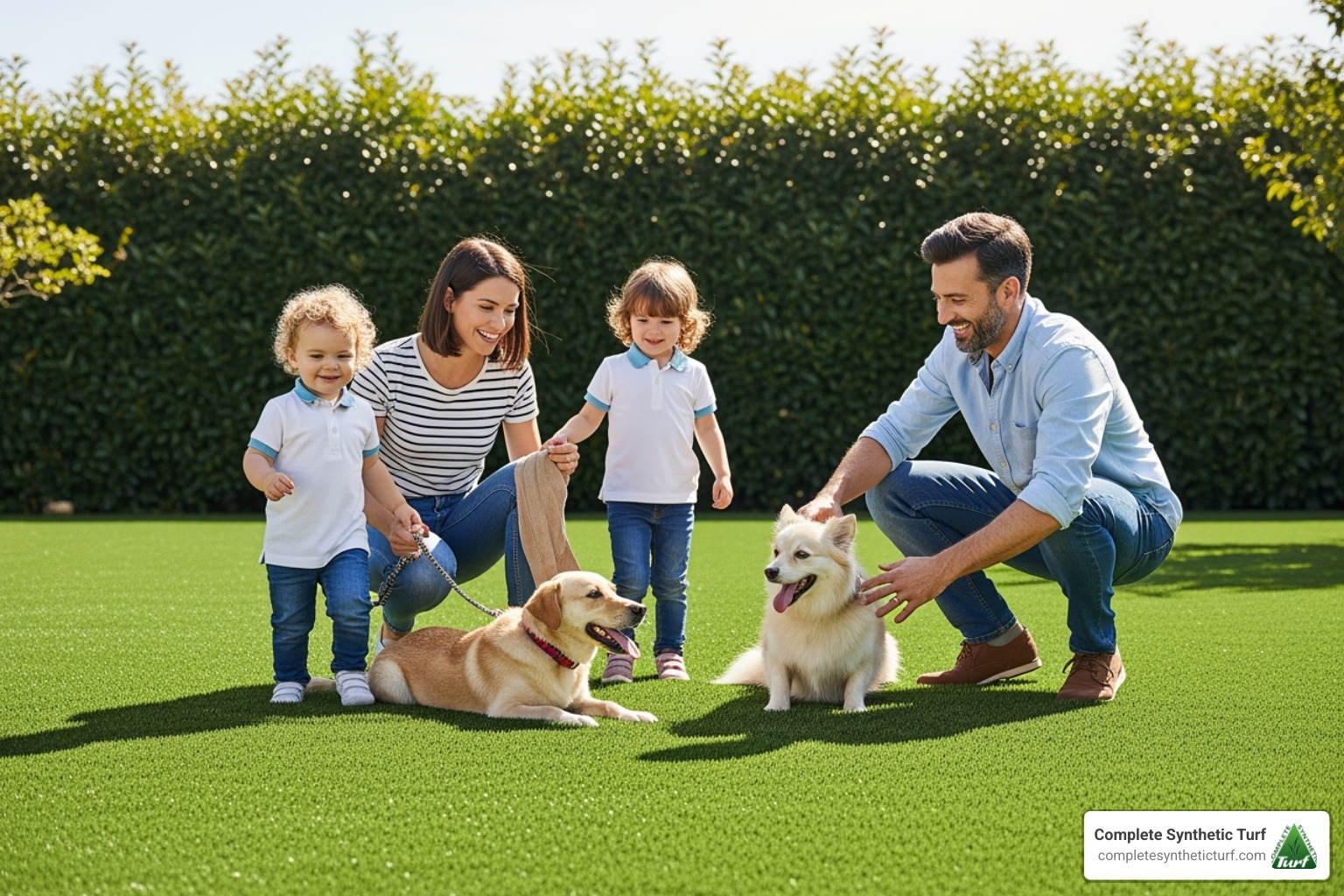
Picture this: it’s Saturday morning, and instead of hearing your neighbor’s lawn mower roaring to life, you’re sipping coffee on your patio, admiring your perfectly manicured lawn. That’s the quality turf near me lifestyle that more homeowners are finding every year.
The immediate relief is obvious – no more weekend mornings spent mowing, no more struggling with broken sprinkler heads, and no more battling stubborn weeds that seem to multiply overnight. But the real magic happens when you look at the bigger picture.
Water conservation becomes effortless when you eliminate the need for daily watering. In Florida’s climate, where water restrictions are common and bills can skyrocket during dry spells, this benefit alone makes synthetic turf a smart choice. Your reduced maintenance costs add up quickly too – no more recurring expenses for landscapers, fertilizers, pesticides, or replacement mower parts.
The beauty of artificial turf lies in its consistency. While your neighbors deal with brown patches, pest damage, and seasonal dormancy, your lawn maintains its year-round green appearance. Whether you’re hosting a summer barbecue or a winter holiday party, your outdoor space always looks picture-perfect and ready for guests.
Durability is where quality synthetic turf really shines. High-grade artificial grass withstands heavy foot traffic, enthusiastic pet play, and Florida’s intense weather conditions without showing wear and tear. Most installations last 15 to 25 years, making it a true long-term investment in your property.
The Environmental Advantages
Beyond personal convenience, choosing artificial turf means making a positive environmental impact. The numbers tell an impressive story that goes far beyond your backyard.
Water savings statistics reveal the true scope of synthetic turf’s environmental benefits. Across North America, artificial turf installations conserve over three billion gallons of water annually. For residential properties, the impact is substantial – over one-third of residential water use in the US goes toward lawn irrigation, totaling more than 4 billion gallons daily.
When you replace just one square foot of natural grass with synthetic turf, you save approximately 55 gallons of water per year. For an average 1,800 square foot lawn, this translates to 99,000 gallons of water saved annually – potentially reducing your water bill by up to $500!
Eliminating pesticides and fertilizers protects our local waterways from harmful runoff. In Florida, thousands of miles of rivers and streams suffer from chemical contamination caused by lawn care products. By choosing artificial turf, you’re helping eliminate the need for nearly a billion pounds of these harmful chemicals nationwide.
The environmental benefits extend to air quality too. Reducing carbon emissions from lawn equipment means fewer gas-powered mowers, trimmers, and blowers polluting our communities. Your quiet Saturday mornings aren’t just more peaceful – they’re cleaner for everyone.
For property owners interested in green building practices, synthetic turf installations can help achieve LEED credits for Water Efficient Landscaping from the U.S. Green Building Council. This recognition demonstrates the environmental value that leading sustainability organizations place on artificial turf.
The industry continues advancing its environmental commitment through recycling programs and sustainable manufacturing. Many products now incorporate recycled materials, with some infill systems using over 105 million recycled tires.
For deeper insights into environmental benefits, explore More about turfgrass sustainability.
Cost vs. Benefit Over 20 Years
The upfront investment in artificial turf might seem higher than seeding a traditional lawn, but the long-term financial picture tells a completely different story. A comprehensive industry study found that natural grass costs 15% more than synthetic turf when comparing total expenses over 20 years.
Here’s how the numbers break down for an average residential lawn over two decades:
| Expense Category | Natural Grass (20 Years) | Artificial Turf (20 Years) |
|---|---|---|
| Initial Installation | $2,000-4,000 (seeding/sod) | $12,000-20,000 |
| Water Costs | $8,000-12,000 | $0 |
| Fertilizer & Chemicals | $3,000-5,000 | $0 |
| Mowing Equipment & Maintenance | $4,000-8,000 | $0 |
| Professional Lawn Care | $6,000-15,000 | $500-1,000 (minimal cleaning) |
| Reseeding & Repairs | $2,000-4,000 | $0 |
| Total 20-Year Cost | $25,000-48,000 | $12,500-21,000 |
The savings become even more impressive when you factor in the value of your time. No more spending weekends on lawn maintenance means you get back roughly 50-100 hours per year to enjoy with family, pursue hobbies, or simply relax.
These numbers explain why quality turf near me searches continue growing as homeowners find the financial wisdom of synthetic grass. The investment pays for itself through reduced utility bills, eliminated maintenance costs, and increased property value.

